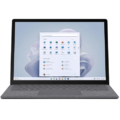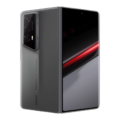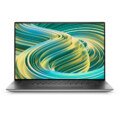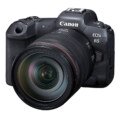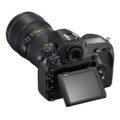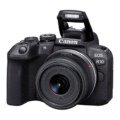- Home
- All Device
- Compare
- Battle of Titans: Samsung Galaxy S23 Ultra vs Samsung Galaxy S24 Ultra
Battle of Titans: Samsung Galaxy S23 Ultra vs Samsung Galaxy S24 Ultra
In the ever-evolving landscape of smartphones, Samsung Galaxy continues to push the boundaries of innovation with each new flagship release. Two of the most anticipated devices in recent times are the Samsung Galaxy S23 Ultra and its successor, the Samsung Galaxy S24 Ultra. Let’s delve into the exciting comparison between these two titans to see how they stack up against each other.
Design and Build:
The design evolution between the Samsung Galaxy S23 Ultra and S24 Ultra is subtle but impactful. Both devices showcase Samsung’s commitment to premium aesthetics with sleek glass and metal constructions. The S24 Ultra, however, introduces a slimmer profile and a more refined bezel-less display, providing users with a visually immersive experience.
Galaxy Display:
One of the key highlights of any Samsung flagship is its display technology, and the S24 Ultra takes it a step further. Boasting a 6.8-inch Dynamic AMOLED display with an enhanced refresh rate of 144Hz, the S24 Ultra promises smoother scrolling and unparalleled color accuracy. While the S23 Ultra’s 120Hz display is no slouch, the S24 Ultra sets a new benchmark in visual excellence.
Camera System:
Samsung has always been at the forefront of smartphone photography, and the camera systems on both these devices reflect that commitment. The S23 Ultra features a quad-camera setup, including a massive 108MP primary sensor, while the S24 Ultra raises the bar with a penta-camera system. The addition of a periscope zoom lens with 10x optical zoom capability in the S24 Ultra allows users to capture distant subjects with unparalleled clarity.
Performance:
Under the hood, the S24 Ultra is powered by the latest Exynos or Snapdragon processor (depending on the region), coupled with an impressive 12GB or 16GB of RAM. The S23 Ultra, while no slouch, sports the previous generation chipset. The performance difference may not be stark in everyday use, but the S24 Ultra provides a more future-proof device.
Battery and Charging:
Both devices feature large battery capacities to ensure all-day usage, but the S24 Ultra takes a step further with an improved 5,000mAh battery. Additionally, the S24 Ultra supports faster charging technology, ensuring that users spend less time tethered to an outlet.
The battle between the Samsung Galaxy S23 Ultra and S24 Ultra is undoubtedly fierce, with each device bringing its own set of enhancements and innovations. While the S23 Ultra remains a formidable choice for users who want a top-tier smartphone, the S24 Ultra raises the bar in various aspects, from display technology to camera capabilities. Choosing between the two will ultimately depend on individual preferences and the importance placed on the latest technological advancements. In the end, both devices showcase Samsung’s commitment to providing users with cutting-edge technology and a premium smartphone experience.


| |
| Price | Device Device |
| Our Rating | |
| Brand | Samsung Samsung |
| Category | Smartphone Smartphone |
General
| Device Type | Smart Phone Smartphone |
| Model | Galaxy S23 Ultra Galaxy S24 Ultra |
| Announced | February, 2023 January, 2024 |
| Released | February, 2023 January, 2024 |
| Status | Available Available |
Design
| Type Design Type called form factor refers to a mobile phone's size, shape, and style as well as the layout and position of major components of phone. There are three major form factors seen in mobile phones => bar phones, folding phones and sliding phones. | Bar Bar |
| Dimensions | 163.4 x 78.1 x 8.9 mm (6.43 x 3.07 x 0.35 in) 162.3 x 79 x 8.6 mm (6.39 x 3.11 x 0.34 in) |
| Weight | 234 g 232g (8.18 oz) |
| Protection |
Glass front (Gorilla Glass Victus 2), glass back (Gorilla Glass Victus 2), aluminum frame, IP68 dust/water resistant (up to 1.5m for 30 min) Armor aluminum frame with tougher drop and scratch resistance Glass front (Gorilla Glass Armor), glass back (Gorilla Glass), titanium frame, IP68 dust/water resistant (up to 1.5m for 30 min) Stylus (Bluetooth integration, accelerometer, gyro) |
| Colors | Phantom Black, Green, Cream, Lavender, Graphite, Sky Blue, Lime, Red Titanium Black, Titanium Gray, Titanium Violet, Titanium Yellow, Titanium Blue, Titanium Green, Titanium Orange |
Network
| 2G Network | GSM850, GSM900, DCS1800, PCS1900 GSM850, GSM900, DCS1800, PCS1900 |
| 3G Network | B1(2100), B2(1900), B4(AWS), B5(850), B8(900) B1(2100), B2(1900), B4(AWS), B5(850), B8(900) |
| 4G Network |
B1(2100), B2(1900), B3(1800), B4(AWS), B5(850), B7(2600), B8(900), B12(700), B13(700), B17(700), B18(800), B19(800), B20(800), B25(1900), B26(850), B28(700), B66(AWS-3) B38(2600), B39(1900), B40(2300), B41(2500) B1(2100), B2(1900), B3(1800), B4(AWS), B5(850), B7(2600), B8(900), B12(700), B13(700), B17(700), B18(800), B19(800), B20(800), B25(1900), B26(850), B28(700), B66(AWS-3) B38(2600), B39(1900), B40(2300), B41(2500) |
| 5G Network |
N1(2100), N2(1900), N3(1800), N5(850), N7(2600), N8(900), N12(700), N20(800), N25(1900), N28(700), N66(AWS-3) N38(2600), N40(2300), N41(2500), N77(3700), N78(3500) N1(2100), N2(1900), N3(1800), N5(850), N7(2600), N8(900), N12(700), N20(800), N25(1900), N26(850), N28(700), N66(AWS-3) N38(2600), N40(2300), N41(2500), N77(3700), N78(3500) |
| Data Speed | 2G GSM, 3G WCDMA, 4G LTE FDD, 4G LTE TDD, 5G Sub6 FDD, 5G Sub6 TDD 2G GSM, 3G WCDMA, 4G LTE FDD, 4G LTE TDD, 5G Sub6 FDD, 5G Sub6 TDD |
| SIM SIM (Subscriber Identity Module) is a small card that contains mobile network subscriber's account information. This allows the phone using the card to attach to a mobile network. The SIM card is most commonly associated with GSM and UMTS mobile networks. Moving a SIM card from one phone to another allows a subscriber to switch mobile phones without having to contact their mobile network carrier. SIM cards can also be used by a phone to store limited amounts of data, such as phone numbers and text messages. | Nano SIM Nano SIM |
| Dual SIM | Nano-SIM and eSIM or Dual SIM (2 Nano-SIMs and eSIM, dual stand-by) Nano-SIM and eSIM/ Dual eSIM or Dual SIM (2 Nano-SIMs and eSIM, dual stand-by) |
Display
| Display Type Display Technology => A number of display technologies and types used in mobile phones => TFT (Thin Film Transistor), IPS (In-Place Switching), OLED (Organic Light Emitting Diode), AMOLED (Active-Matrix Organic Light-Emitting Diode), Super AMOLED (an even advanced version of AMOLED), Resistive Touchscreen (Resistive touchscreens contain two layer of conductive material with a very small gap between them which acts as a resistance), Capacitive Touchsceen (Capacitive touchscreen technology consists of a layer of glass coated with a transparent conductor) | Dynamic AMOLED 2X Dynamic LTPO AMOLED 2X |
| Size | 173.1mm (6.8") 6.8 inches, 113.5 cm2 (~88.5% screen-to-body ratio) |
| Resolution | 1440 x 3088 pixels- (Quad HD+) 1440 x 3120 pixels, 19.5:9 ratio (~505 ppi density) |
| Display Colors Display Colors is refers to the number of different shades of colors that the screen is capable of displaying => 64K colors, 256K colors and 16 million colors, Obviously 16M is highest available range of colors and better than others. | 16M colors 16M |
| Touch Screen | Yes, Multitouch |
| Display Protection Display Protection => Gorilla Glass is a special alkali-aluminosilicate glass shield with exceptional damage resistance that helps protect mobile displays from scratches, drops, and bumps of everyday use, It is always better to go for a smartphone with Gorilla Glass for that added protection and peace of mind. | Corning Gorilla Glass Victus 2 Corning Gorilla Glass Armor |
| Features | Always-on display, TouchWiz UI 120Hz, HDR10+, 2600 nits (peak), Always-on display |
Media
| Audio Playback | MP3, M4A, 3GA, AAC, OGG, OGA, WAV, AMR, AWB, FLAC, MID, MIDI, XMF, MXMF, IMY, RTTTL, RTX, OTA, DFF, DSF, APE MP3, M4A, 3GA, AAC, OGG, OGA, WAV, AMR, AWB, FLAC, MID, MIDI, XMF, MXMF, IMY, RTTTL, RTX, OTA, DFF, DSF, APE |
| Video Playback | MP4, M4V, 3GP, 3G2, AVI, FLV, MKV, WEBM MP4, M4V, 3GP, 3G2, AVI, FLV, MKV, WEBM |
| Video Out | UHD 8K (7680 x 4320)@60fps UHD 8K (7680 x 4320)@60fps |
| FM Radio | No No |
| Loudspeaker | Yes, with stereo speakers Yes, with stereo speakers |
Camera
| Primary Camera is able to capture photographs and usually videos, The most important characteristics of a camera are the resolution (measured in megapixels), lens focus type (fixed or automatic), higher megapixel cameras are known to capture higher quality photos, but not always a good measurement of the photos quality. | Quad Camera 200 MP, f/1.7, 24mm (wide) 200 MP |
| Image | 3264 x 2448 pixels, Auto HDR, panorama auto-HDR, panorama |
| Video | 8K@24/30fps, 4K@30/60fps, 1080p@30/60/240fps, 1080p@960fps, HDR10+, stereo sound rec., gyro-EIS 8K@24/30fps, 4K@30/60/120fps, 1080p@30/60/240fps, 1080p@960fps, HDR10+, stereo sound rec., gyro-EIS |
| Camera Features |
200 MP, f/1.7, 24mm (wide), 1/1.3", 0.6µm, multi-directional PDAF, Laser AF, OIS 10 MP, f/4.9, 230mm (periscope telephoto), 1/3.52", 1.12µm, Dual Pixel PDAF, OIS, 10x optical zoom 10 MP, f/2.4, 70mm (telephoto), 1/3.52", 1.12µm, Dual Pixel PDAF, OIS, 3x optical zoom 12 MP, f/2.2, 13mm, 120˚ (ultrawide), 1/2.55", 1.4µm, Dual Pixel PDAF, Super Steady video 200 MP, f/1.7, 24mm (wide), 1/1.3", 0.6µm, multi-directional PDAF, Laser AF, OIS 50 MP, f/3.4, 111mm (periscope telephoto), PDAF, OIS, 5x optical zoom 10 MP, f/2.4, 67mm (telephoto), 1/3.52", 1.12µm, Dual Pixel PDAF, OIS, 3x optical zoom 12 MP, f/2.2, 13mm, 120˚ (ultrawide), 1/2.55", 1.4µm, Dual Pixel PDAF, Super Steady video |
| Flash Flash Light => There is commonly two types of flash lights are used in camera mobile phones, LED Flash (LED flash offers lower power consumption with drive circuitry that takes up very little room, LEDs can be strobed faster than any other light source), Xenon Flash (xenon flash produces an extremely intense full-spectrum white light for a very short duration) | LED flash LED flash |
| Secondary | 12 MP, f/2.2, 26mm (wide), Dual Pixel PDAF, Dual video call, Auto-HDR, HDR10+, 4K@30/60fps, 1080p@30fps 12 MP, f/2.2, 26mm (wide), Dual Pixel PDAF, Dual video call, Auto-HDR, HDR10+, 4K@30/60fps, 1080p@30fps |
Software
| Operating System OS => Every computer system run on a base software called Operating System (OS). Operating System controls all basic operations of the computer (such as smartphone, PDAs, tablet computers and other handheld devices). The Operating System allows the user to install and run third party applications (apps), apps are used to add new functionality to the device. | Android 13 Android 14 |
| User Interface UI or user interface of a device is the look and feel of the on-screen menu system. How it works, its color scheme, how it responds to button presses, all of these things are part of the user interface. | One UI 5.1 One UI 6.1 |
| Java Support Java for Mobile Devices is a set of technologies that let developers deliver applications and services to all types of mobile handsets, ranging from price efficient feature-phones to the latest smartphones. Java is currently running on over 3 billion phones worldwide, and growing. It offers unrivaled potential for the distribution and monetization of mobile applications. | Yes, via Java MIDP emulator |
| Facebook Facebook is a popular free social networking website that allows registered users to create profiles, upload photos and video, send messages and keep in touch with friends, family and colleagues. The site is available in 37 different languages. | |
| Youtube Youtube is a popular free video-sharing website, Youtube is the largest video sharing site in the world, Millions of users around the world have created accounts on the site that allow them to upload videos that anyone can watch. |
Hardware
| Chipset Chipset is a group of integrated circuits designed to perform one or a more dedicated functions, often with real time computing constraints, Popular smartphones are equipped with more advanced embedded chipsets that can do many different tasks depending on their programming. | Qualcomm SM8550-AC Snapdragon 8 Gen 2 (4 nm) Qualcomm SM8650-AC Snapdragon 8 Gen 3 (4 nm) |
| CPU CPU (Central Processing Unit) mostly known as processors, CPU processes instructions in order to carry out certain functions that make your device operate properly. Processors are often described as the brain of computers, smartphones and tablets, Smartphones and tablets rely on processors to carry out their every task, Processors are an incredibly important factor in selecting any type of computing device, including your smartphone. | Octa-core (1x3.36 GHz Cortex-X3 & 2x2.8 GHz Cortex-A715 & 2x2.8 GHz Cortex-A710 & 3x2.0 GHz Cortex-A510) 8-core (1x3.39GHz Cortex-X4 & 3x3.1GHz Cortex-A720 & 2x2.9GHz Cortex-A720 & 2x2.2GHz Cortex-A520) |
| GPU GPU (Graphics Processing Unit) is a single-chip processor designed to rapidly manipulate and alter memory to accelerate the creation of images in a frame buffer intended for output to a display, This includes things such as lighting effects, object transformations, and 3D motion. | Adreno 740 Adreno 750 (1 GHz) |
| RAM (Memory) RAM (Random Access Memory) is a type of computer memory that can be accessed randomly, any byte of memory can be accessed without touching the preceding bytes that allows information to be stored and accessed quickly from random locations. RAM is the most common type of memory found in computer systems, smartphones, tablets and other electronic devices. | 12 GB 12 GB |
| Internal Storage Internal Storage is a data storage space (flash memory) mostly used in smartphones, tablets and other electronic devices where operating system, apps, music, photos, videos, files and other user data Is stored. | 256GB, 512GB, 1TB- UFS 4.0 256GB, 512GB, 1TB- UFS 4.0 |
| Card Slot Memory Card Slot is a special slot for inserting a memory card. Memory cards allow you to expand the phone's built-in memory, A memory card (sometimes called a flash memory card or a storage card) is a small storage medium used to store data such as text, pictures, audio, and video, for use on small, portable or remote computing devices such as mobile phones, mp3 players, digital cameras. | No No |
| Sensors Sensors are electronic components that detects and responds to some type of input from the physical environment. The specific input could be light, heat, motion, moisture, pressure and location, The output is generally a signal that is converted to use in computing systems, a location sensor, such as a GPS receiver is able to detect current location of your electronic device. |
Accelerometer, Barometer, Fingerprint Sensor, Gyro Sensor, Geomagnetic Sensor, Hall Sensor, Light Sensor, Proximity Sensor Fingerprint (under display, ultrasonic), accelerometer, gyro, proximity, compass, barometer Samsung DeX, Samsung Wireless DeX (desktop experience support) Ultra Wideband (UWB) support |
Connectivity
| Bluetooth Bluetooth is a wireless communications technology for exchanging data between mobile phones, headsets, computers and other network devices over short distances without wires, Bluetooth technology was primarily designed to support simple wireless networking of personal consumer devices. | 5.3, A2DP, LE Bluetooth v5.3 |
| Wi-fi Wi-Fi is a popular wireless networking technology using radio waves to provide high-speed network connections that allows devices to communicate without cords or cables, Wi-Fi is increasingly becoming the preferred mode of internet connectivity all over the world. | Wi-Fi 802.11 a/b/g/n/ac/6e, tri-band, Wi-Fi Direct 802.11a/b/g/n/ac/ax/be 2.4GHz+5GHz+6GHz, EHT320, MIMO, 4096-QAM |
| Wi-fi Hotspot | |
| USB | USB Type-C 3.2, OTG USB Type-C 3.2, DisplayPort 1.2, OTG |
| GPS GPS The Global Positioning System is a satellite-based radio navigation system, GPS permits users to determine their position, velocity and the time 24 hours a day, in all weather, anywhere in the world, In order to locate your position, your device or GPS receiver must have a clear view of the sky. | GPS, Glonass, Beidou, Galileo, QZSS GPS, GLONASS, BDS, GALILEO, QZSS |
| NFC NFC (Near field communication) is a set of standards for smartphones and similar devices to establish peer-to-peer radio communications with each other by touching them together or bringing them into proximity, usually no more than a few inches. |
Data
| GPRS GPRS (General Packet Radio Service) is a packet oriented mobile data service on the 2G and 3G cellular communication system's global system for mobile communications (GSM), Generally, GPRS is used for the purpose of wireless data transfer, such as sharing pictures and videos or browsing the Internet via a mobile phone connection. | |
| EDGE EDGE (Enhanced Data GSM Environment) is a wireless network technology generally considered the next step in the 2G network offers data transfer rates up to four times faster than ordinary GSM networks, Generally, EDGE is used for the purpose of wireless data transfer, such as sharing pictures and videos or browsing the Internet via a mobile phone connection. | |
| Speed | 2G GSM, 3G WCDMA, 4G LTE FDD, 4G LTE TDD, 5G Sub6 FDD, 5G Sub6 TDD 2G GSM, 3G WCDMA, 4G LTE FDD, 4G LTE TDD, 5G Sub6 FDD, 5G Sub6 TDD |
| Web Browser Web Browser => a web browser is a software application used to locate, retrieve and display content on the World Wide Web, including Web pages, images, video and other files, The primary function of a web browser is to render HTML, the code used to design or markup webpages. | Yes, HTML5 |
Messaging
| SMS SMS (Short Messaging Service) is a text messaging service component of phone, Web, or mobile communication systems. It uses standardized communications protocols to allow mobile phone devices to exchange short text messages over the networks. | Yes (threaded view) Yes |
| MMS MMS (Multimedia Messaging Service) is a standard way to send messages that include multimedia content (audio clips, video clips and images) to and from mobile phones over wireless networks using the WAP protocol. | |
| Email Email (Electronic Mail) is a system for receiving, sending, and storing electronic messages, Similar to a letter, email is text messages that may contain files, images, or other attachments sent via the internet to a recipient by using applications and software prograps. An email address is required to receive email, and that address is unique to the user. | Yes Yes |
| IM IM (Instant Messaging) is an exchange of text messages through a software application, it enable you to create a kind of private chat room with another individual in order to communicate in real time over the Internet. | Yes |
Battery
| Battery Type Battery Type => Cell phones run on various kinds of batteries depending on the manufacturer, phone size or shape and features. There are basically four types of cell phone batteries => Lithium Polymer, Lithium Ion, Nickel Metal Hydride and Nickel Cadmium. | Li-Ion (Lithium Ion) Li-Ion (Lithium Ion) |
| Capacity Battery Capacity is a measure (typically in Amp-hr) of the charge stored by the battery, and is determined by the mass of active material contained in the battery. The battery capacity represents the maximum amount of energy that can be extracted from the battery under certain conditions. | Li-Ion 5000 mAh Li-Ion 5000 mAh, non-removable |
| Charging Method | 45W wired, PD3.0, 65% in 30 min (advertised) 15W wireless (Qi/PMA) 4.5W reverse wireless 45W wired, PD3.0, 65% in 30 min (advertised) 15W wireless (Qi/PMA) 4.5W reverse wireless |
| Standby Standby Time is the total amount of time that you can leave your is fully charged, turned on and ready to send and receive calls or data transmissions before completely discharging the battery. | Up to 126 hrs |
| Talk Time Talk Time is the longest time that a single battery charge will last when you are constantly talking on the phone under perfect conditions, Ambient temperature and highly dependent on the cellular network environment such as the distance to the closest cell network tower. | Up to 27 hrs |
| Music Play | Up to 47 hrs Up to 95 |
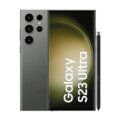
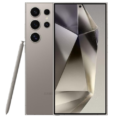
|

